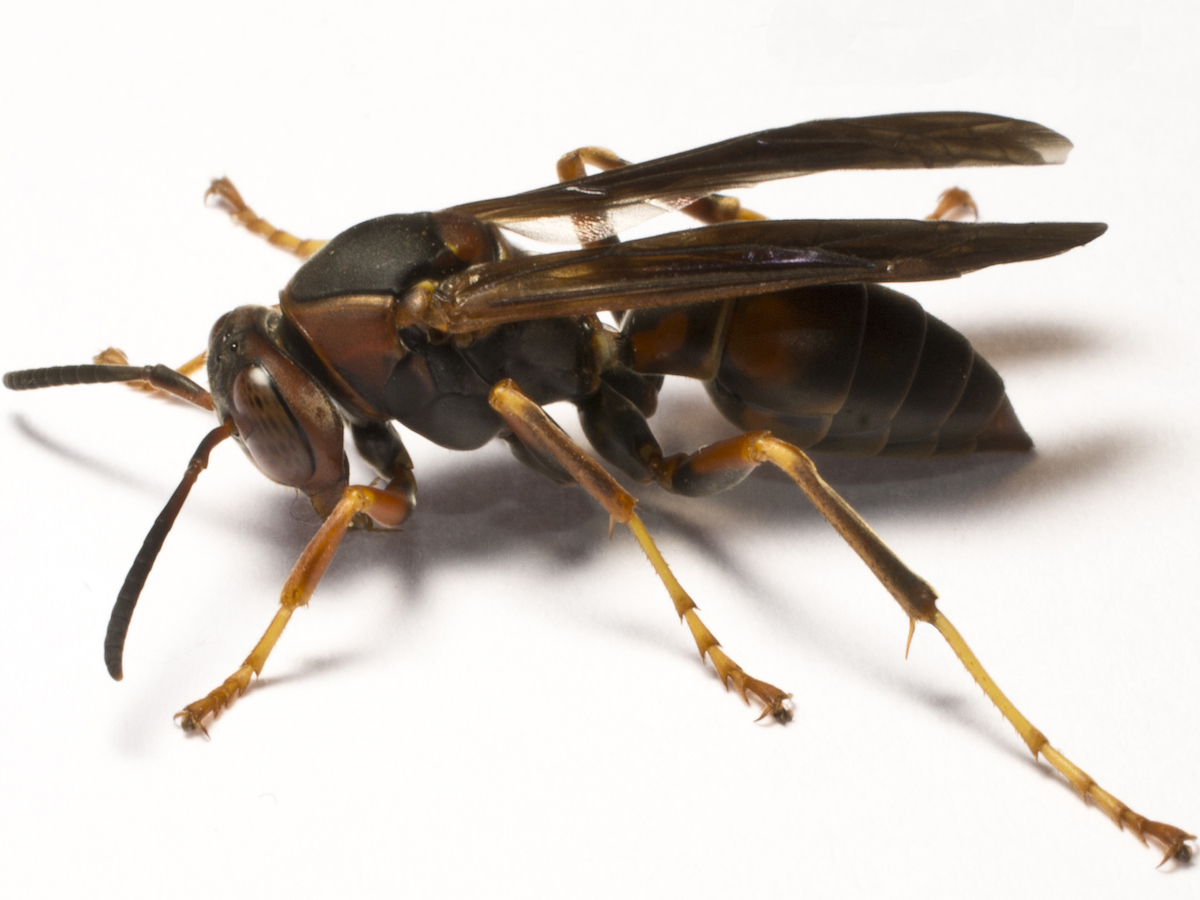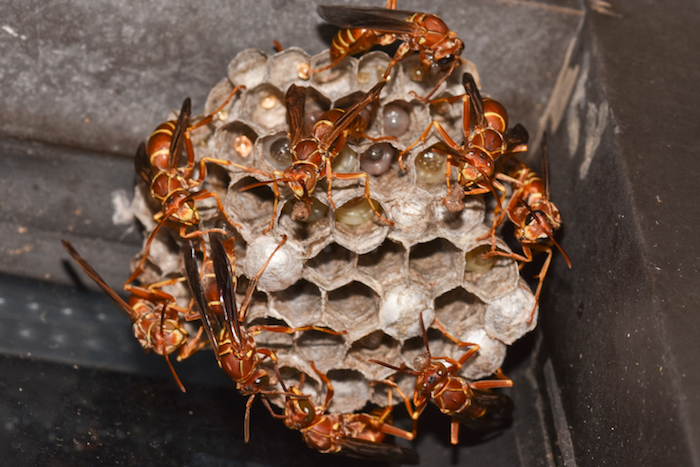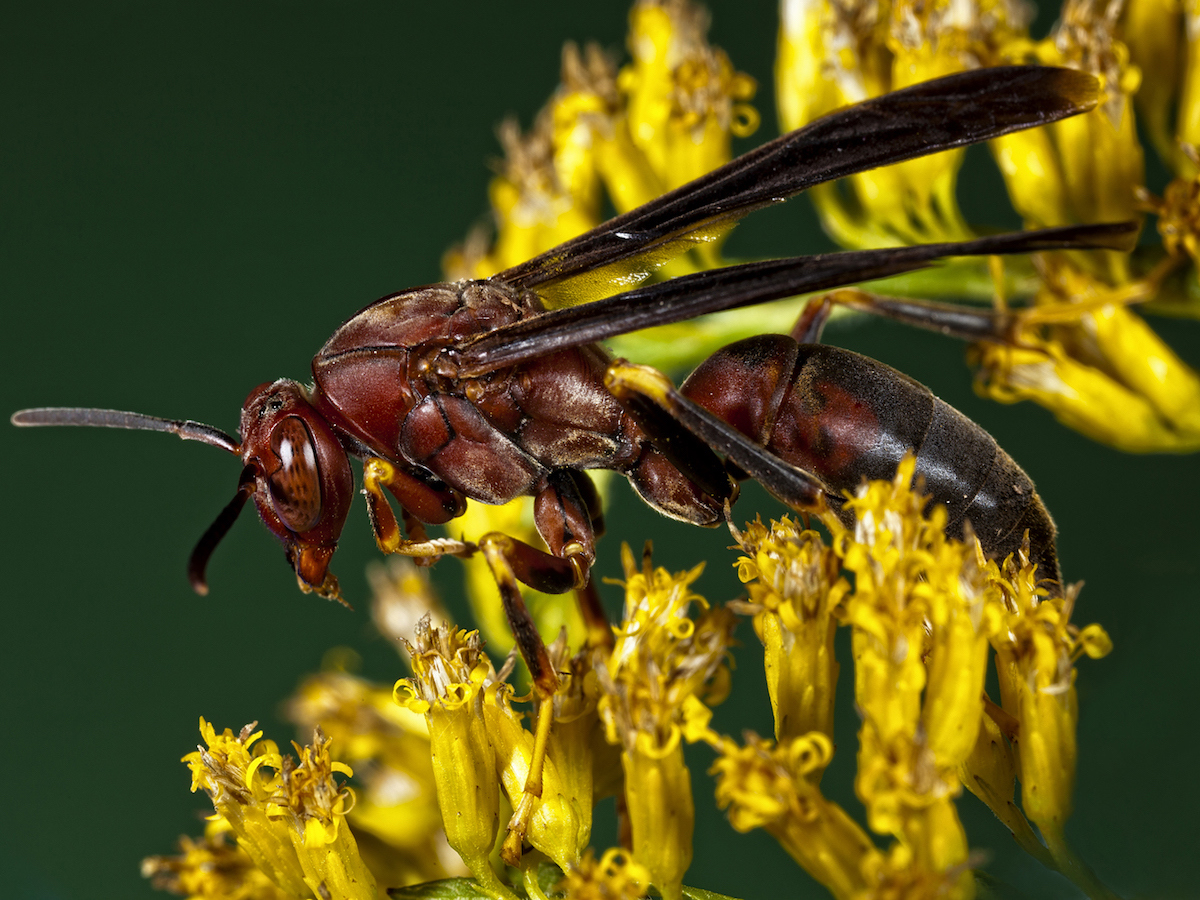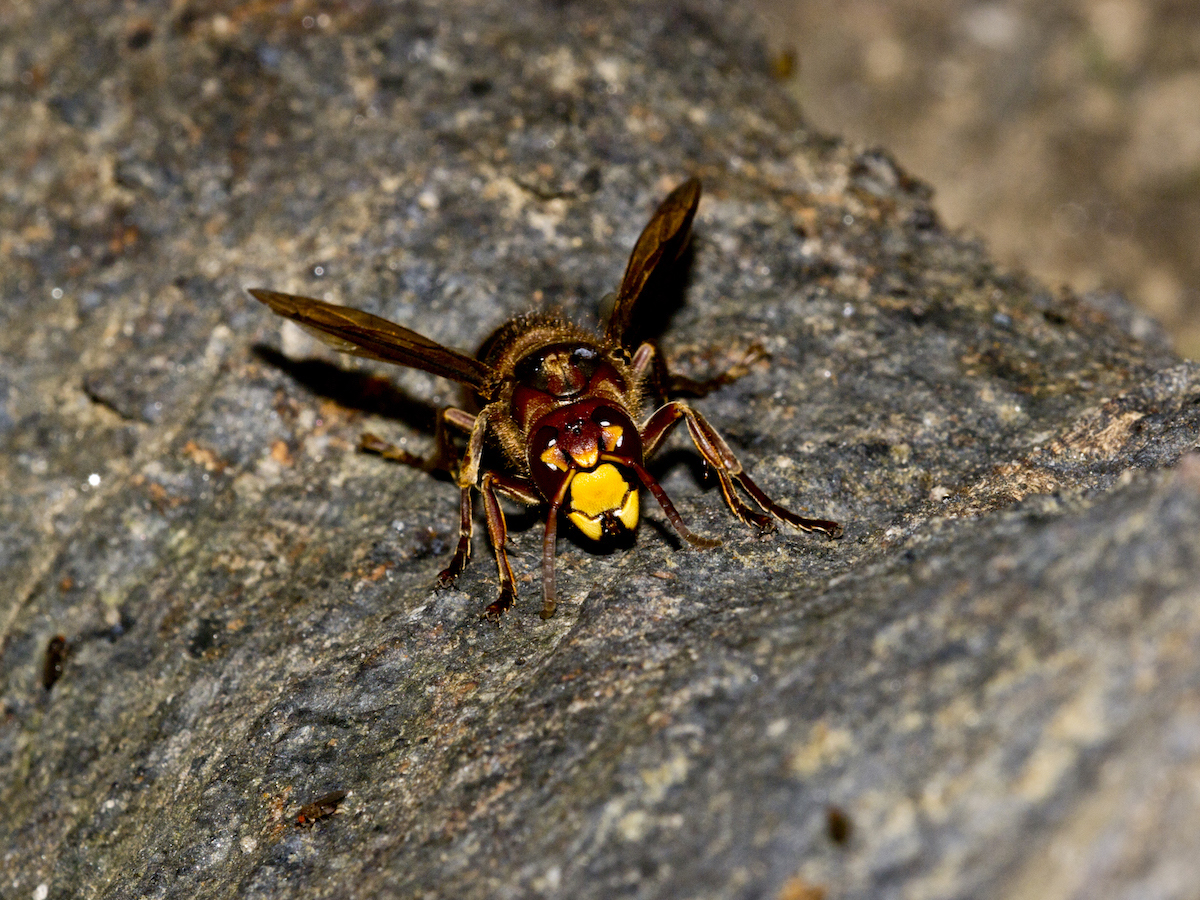Paper Wasps Polistes spp.

Paper Wasp Identification
Color: Brownish with yellow markings; a few species with reddish markings
Size: 5/8 – 3/4” (16-20 mm)
Legs: 6
Antennae: Yes
Shape: Wasp-like, with long legs
Region: Found throughout U.S.
What is a Paper Wasp
Paper wasps get their common name from the paper-like material out of which they make their nests. Paper wasps are sometimes called umbrella wasps, after the shape of their distinctive nests.
Paper wasps are a group of several species of vespid wasp. These stinging insects are semi-social creatures, as they typically live in small colonies but do not have a worker caste. There are about 22 known paper wasp species in North America, and hundreds in the world. Some additional species of this type of insect include the annularis paper wasp, apache paper wasp, dominulus paper wasp, dorsalis paper wasp and golden paper wasp. Similar groups to paper wasps include yellowjackets and hornets, potter and mason wasps, spider wasps and long waisted paper wasps. Keep reading to learn more, including information on paper wasp stings and paper wasp removal.
What Do Paper Wasps Look Like
Paper wasps generally have a similar body shape to yellowjackets, but somewhat slimmer with a thin “waist,” with six long legs and an almost triangular side view, as well as two wings and antennae. They are mostly brown with some yellow coloration. Each of the known paper wasp species share similar traits of brown and yellow coloring, but they also have different bands of colors and markings that separate them from one another. Some species of paper wasp may even have hints of bolder colors like red, or even brighter colored lines compared to others.
While not an aggressive species by nature, paper wasps will sting if they are disturbed or their nest is threatened. It’s unusual for an impregnated paper wasp to sting, but it can happen.
Paper wasp stings can be very painful and can cause the same risk of allergic reaction as other insect stings. The location of the sting will become red and swollen. If you get stung by a paper wasp, immediately clean the area with soap and cold water. If the sting is on an extremity, consider elevating the limb. Over the counter nonsteroidal anti-inflammatory drugs (NSAIDs) can help reduce pain, while an antihistamine and hydrocortisone ointment can help calm the local reaction. If the pain worsens, contact your healthcare provider. Read more: How to Treat Bee or Wasp Stings.
Paper wasps eat nectar and other insects including caterpillars and flies. In the autumn, future queens will seek places to spend the winter and may find their way indoors.
Then, in the springtime, they will emerge to build their umbrella-shaped nests that look as though they are made of paper. Paper wasps build their comb nests to hang from objects like twigs and branches of trees and shrubs, porch ceilings, the tops of window and doorframes, soffits, eaves, attic rafters, deck floor joists, railings and more. Each nest has open, uncovered cells where the eggs are laid. Other females will help build future nests, and only the one queen will lay eggs for the colony. Once that queen dies, a new egg-laying female will take her place.
Paper wasps often build nests in residential yards, so one of the main signs of an infestation is the physical sighting of the nest itself and nearby wasps moving around the nest.
The best way to prevent a paper wasp infestation and the potential of getting stung is to make the home less attractive to the stinging insect. Before trimming shrubs or hedges, or picking fruit, check the plant for paper wasp nests to avoid contact with these stinging insects. Seal cracks and crevices in the home with a silicone-based caulk, repair any tears in screens, and try to keep doors closed to prevent paper wasps from entering the home.
Keeping food covered, especially when outdoors, will also help keep these insects at bay when they are in search of nourishment. When spending time outside, people should avoid wearing strong fragrances and opt for unscented hygienic products. Likewise, they should wear shoes that cover and protect their feet from rogue paper wasps.
If you suspect you have a paper wasp infestation or find a wasp nest on your property, contact a licensed pest control professional to find out about wasp treatment. Do not attempt paper wasp nest removal on your own, as there is a high probability the paper wasps will protect their home by stinging you.






